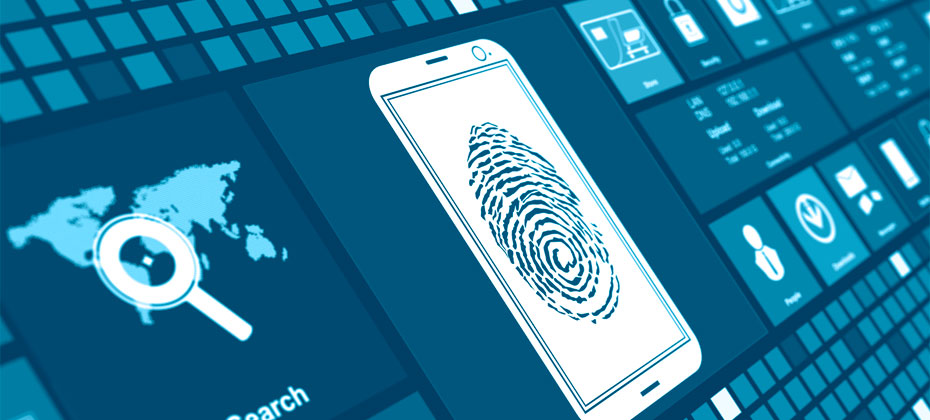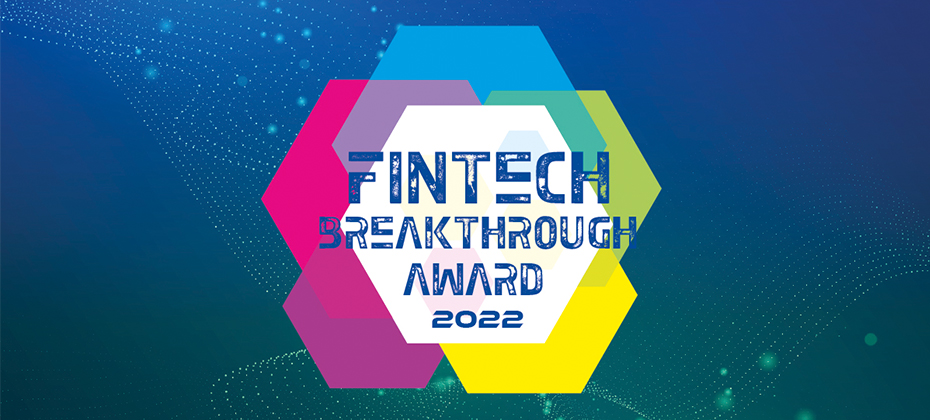Tag: data

The state of digital banking is a story of fragmentation and technology that's often outdated or poorly integrated. Customer journeys are often suboptimal, and multiple layers of technological solutions often translate to problems like poor data hygiene, lack of regulatory compliance and missed opportunities. In addition, the use of legacy software can make it challenging to integrate up-to-date methods such as AI analytics solutions. However, demand on both the front and back ends for better digital services and more-efficient processes is driving banks to take on digital transformations that will help them stay competitive in an evolving technological landscape. Customers expect a frictionless, personalized and highly functional digital experience. To match strength with digital-native competitors, banks and lenders must transform how their organizations do business. What is digital transformation, and what does it mean for banks and lenders? A comprehensive digital transformation strategy is more than just investing in new digital tools. It's about rebuilding the structure and infrastructure of your business so that online and digital services and processes form the core of your competencies and offerings. Digital transformation is an ongoing journey rather than an end goal. It's a continuous process that iterates as you steadily improve and streamline operations and integrate new and improved technologies. One of the key aspects of digital transformation in banking is better gathering and leveraging of data. Banks, especially larger ones with a longer business history, possess large quantities of data that may be siloed or poorly utilized. By improving how they collect, analyze and make use of data, banks and financial institutions can enhance their decision-making abilities and engage with consumers in a more authentic, personalized way. Perhaps most important, digital transformation is customer-centric. While upgrading, merging and integrating back-end technologies and data solutions is a key component of the process, it's all done with the customer experience top of mind. Centralizing, streamlining and modernizing digital operations help to create a seamless, secure and highly targeted customer journey. The core pillars of digital transformation Multiple core pillars are involved in undergoing a successful digital transformation. Each of these should be integrated into a comprehensive strategy that considers the transformation as an integrated process, rather than a series of individual projects. In fact, one common error banks make when upgrading their digital infrastructure and offerings is failing to coordinate digital initiatives. A true digital transformation is holistic, resulting in apps, infrastructure, digital systems and customer experience platforms that are all part of one coherent, consistent approach. Data: Data is at the heart of digital transformation. It's through maximizing and optimizing usable data that financial institutions can truly make an impact on their ability to reach and connect with target consumers. Using data the right way means prioritizing security and privacy while taking advantage of opportunities to improve consumer targeting and engagement and personalization of offers. Analytics: Data can't do its job if it's not interpreted in a way that makes sense for your business. Quality analytics software and comprehensive analysis are what turn a set of disparate data points into usable information that informs smart decision-making and improves KPIs. Automation: Machine learning is improving by leaps and bounds, and it's only going to get more useful for businesses looking to increase the efficiency of their sales, marketing and engagement efforts. AI solutions are no longer a fringe tool but are quickly becoming part of the mainstream and a key component of digital strategies. Customers: With the array of digital tools available today, it's easy to lose sight of the main purpose of your business — connecting with people. Customers today expect digital engagement experiences that feel personalized and real, which is why a consistent, appealing digital customer journey should be top of mind in any digital transformation strategy. How can banks benefit? New, digitally native fintech solutions abound in the contemporary landscape. Overall, they tend to be highly competent when it comes to making the most of state-of-the-art tools like artificial intelligence, mobile apps and blockchain. By combining their brand longevity with a well-executed digital transformation, traditional banks can capitalize on their established reputations by reaching consumers with compelling offerings that utilize and are based on best-in-class digital tools and data analysis. Digital transformation in banking can have numerous benefits. For one, operations will be more streamlined. For another, enhanced security will make customers feel more secure while minimizing losses from fraud. In addition, integrating top-of-the-line data and analysis will result in better overall decision-making. The ultimate goal? Boosting lead generation and conversion rates and improving customer onboarding while reducing churn, thereby maximizing the efficiency of budget spend across multiple departments, from marketing to customer service. Get started with Experian Implementing a digital transformation that truly improves your business can be a daunting task, but it's achievable with the right partner. Experian's connectable and configurable solutions and technology can help drive your digital transformation. With offerings like our cloud platform solutions, you'll be well-positioned to move forward and take advantage of up-to-date technologies to serve your customers better. Learn more about how you can benefit from the digital transformation in banking. Start your digital transformation journey

‘Big data’ might not be the buzzword du jour, but it's here to stay. Whether trying to improve your customer experience, portfolio performance, automation, or new AI capabilities, access to quality data from varying data sources can create growth opportunities. 85 percent of organizations believe that poor-quality customer contact data negatively affects their operations and efficiencies, which leads to wasted resources and damages their brand. And 77 percent said that inaccurate data hurt their response to market changes during the pandemic.1 If you want to use data to drive your business forward, consider where the data comes from and how you can glean useful insights. What is a data source? A data source is a location where you can access information. It's a broad description because data sources can come in different formats — the definition depends on how the data is being used rather than a specific storage type. For example, you can get data from a spreadsheet, sensors on an internet of things device or scrape it from websites. You might store the data you gather using different types of databases. And in turn, those databases can be data sources for other programs or organizations. Types of data sources Many organizations have chief data officers, along with data engineers, scientists and analysts who gather, clean, organize and manage data. This important work relies on understanding the technical aspects of varying data sources and connections. And it can turn a disorganized pool of data into structured databases that business leaders can easily access and analyze. From a non-technical point of view, it’s important to consider where the data comes from and the pros and cons of these data sources. For instance, marketers might define data sources as: First-party data: The data collected about customers and prospects, such as account details, transaction history and interactions with your website or app. The data can be especially valuable and insightful when you can connect the dots between previously siloed data sources within your organization.Zero-party data: Some organizations have a separate classification for information that customers voluntarily share, such as their communication preferences and survey results. It can be helpful to view this data separately because it reflects customers' desires and interests, which can be used to further customize your messaging and recommendations.Second-party data: Another organization's first-party data can be your second-party data if you purchase it or have a partnership that involves data sharing or data collaboration. Second-party data can be helpful because you know exactly where the information comes from and it can complement information you already have about customers or prospects.Third-party data: Third-party data comes from aggregators that collect and organize information from multiple sources. It can further enrich your customer view to improve marketing, underwriting, customer service and collection efforts. READ: The Realizing a Single Customer View white paper explores how organizations can use high-quality data to better understand their customers. How can a data-driven approach benefit your business? Organizations use data science to make sense of the increasingly large flow of information from varying data sources. A clear view can be important for driving growth and responding to changing consumer preferences and economic uncertainty. A 2022 survey of U.S. organizations found high-quality data can help:2 Grow your business: 91 percent said investing in data quality helped business growth.Improve customer experience: 90 percent said better data quality led to better customer experiences.Increase agility: 89 percent said best practices for data quality improved business agility. You can see these benefits play out in different areas. For example, you can more precisely segment customers based on reliable geographic, demographic, behavioral and psychographic data. Or combine data sources to get a more accurate view of consumer risk and increase your AI-powered credit risk decisioning capabilities. But building and scaling data systems while maintaining good quality isn't easy. Many organizations have to manage multiple internal and external data sources, and these can feed into databases that don't always communicate with one another. Most organizations (85 percent) are looking toward automation to improve efficiency and make up for skill shortages. Most are also investing in technology to help them monitor, report and visualize data — making it easier to understand and use.3 WATCH: See how you can go from data to information to insight and foresight in the Using Business Intelligence to Unlock Better Lending Decisions webinar. Access high-quality data from Experian Digital acceleration has made accessing quality data more important than ever. This includes learning how to collect and manage your zero- and first-party data. Experian's data quality management solutions can help you aggregate, cleanse and monitor your data. And the business intelligence tools and platform democratize access, allowing non-technical business leaders to find meaningful insights. You can also enhance your data sets with second- and third-party data. Our industry-leading data sources have information on over 245 million consumers and 32 million businesses, including proprietary data assets. These include traditional credit bureau data, alternative credit data, automotive data, commercial credit data, buy now pay later data, fraud data and residential property data. And you can use our API developer portal to access additional third-party data sources within the same interface. Learn more about Experian's data sources. 1. Experian (2022). 2022 Global Data Management Research Report2. Experian (2022). The Data Quality Imperative3. Ibid.

With an ever-present need for efficiency, security, and seamless citizen services, many agencies are looking at the benefits of a data-driven government. Last year, the federal government kicked off a unified effort to enable data-driven decision making. The goal at that level – and across all agencies – is to serve citizens more efficiently and effectively. By embracing the power of data and analytics, agencies of all sizes can set themselves up to better serve their citizens. What is a data-driven government? Agencies collect citizen data from a variety of service-based sources, including the Postal Service, Census Bureau, social welfare departments, and agencies that issue government IDs. When properly leveraged, this data holds many possibilities. However, many agencies face challenges when it comes to efficient collection, sharing, usage, integrity, and accessibility. Due to the amount of data collected and the potential lack of consistency in the collection and storage techniques, the data may not be usable. Without proper management and analysis, there’s little government agencies can do with their data to improve their processes. A data-driven government has well-managed data and uses that data to drive their decisions as they relate to citizen requests for benefits, tax collection, elections, and more. What are the benefits of data-driven decision making? Data management and government data analytics enable agencies to react quickly to citizen demands and concerns and proactively anticipate an issue before it becomes a crisis. With the right tools, agencies can gain a holistic view of their citizens, communicate effectively internally, provide digitally-driven services and improve overall efficiency through government-wide data integration and management. These changes have a wide range of benefits, including reduction of cost, fraud, waste and abuse, the automation of manual processes, and better service delivery. Why is a data-driven strategy required? In addition to the benefits listed above, a data-driven strategy also helps agencies align with published NIST guidelines and the need to monitor, evaluate, and maintain digital identity systems. Proper use of data-driven digital identity strategies will enhance equity and the usability of the solutions agencies provide to their citizens. Building an effective data-driven strategy The right strategy starts with ensuring that all departments about the need for proper data management and analytics and the guidelines that will govern it, such as maintaining up-to-date data, removing silos, and leveraging the right tools. The next step is finding the right partner. An effective partner can help agencies develop and maintain data management systems and implement the right tools and analytics – things like machine learning in government – to help each agency function efficiently and safeguard the data of its citizens. To learn how Experian can help your agency improve its use of data, visit us or request a call. Visit us

Every data-driven organization needs to turn raw data into insights and, potentially, foresight. There was a time when lack of data was a hindrance, but that's often no longer the case. Many organizations are overwhelmed with too much data and lack clarity on how to best organize or use it. Modern business intelligence platforms can help. And financial institutions can use business intelligence analytics to optimize their decisioning and uncover safe growth opportunities. What is business intelligence? Business intelligence is an overarching term for the platforms and processes that organizations use to collect, store, analyze and display data and information. The ability to go from raw data to useful insights and foresight presents organizations with a powerful advantage, and can help them greatly improve their operations and efficiencies. Let’s pause and break down the below terms before expanding on business intelligence. Data: The raw information, such as customers' credit scores. Many organizations collect so much data that keeping it all can be an expensive challenge. Access to new types of data, such as alternative credit data, can assist with decisioning — but additional data points are only helpful if you have the resources or expertise to process and analyze them.Information: Once you process and organize data points, you can display the resulting information in reports, dashboards, and other visualizations that are easier to understand. Therefore, turning raw data into information. For example, the information you acquire might dictate that customers with credit scores over 720 prefer one of your products twice as much as your other products.Insight: The information tells you what happened, but you must analyze it to find useful and actionable insights. There could be several reasons customers within a specific score band prefer one product over another, and insights offer context and help you decide what to do next. In addition, you could also see what happened to the customers who were not approved.Foresight: You can also use information and insights to make predictions about what can happen or how to act in the future given different scenarios. For example, how your customers' preferences will likely change if you offer new terms, introduce a new product or there's a large economic shift. Business intelligence isn't new — but it is changing. Traditionally, business intelligence heavily relied on IT teams to sift through the data and generate reports, dashboards and other visualizations. Business leaders could ask questions and wait for the IT team to answer the queries and present the results. Modern business intelligence platforms make that process much easier and offer analytical insights. Now even non-technical business leaders can quickly answer questions with cloud-based and self-service tools. Business intelligence vs. business intelligence analytics Business intelligence can refer to the overall systems in place that collect, store, organize and visualize your data. Business intelligence tends to focus on turning data into presentable information and descriptive analytics — telling you what happened and how it happened. Business intelligence analytics is a subset of business intelligence that focuses on diagnostics, predictive and prescriptive analytics. In other words, why something happened, what could happen in the future, and what you should do. Essentially, the insights and foresight that are listed above. How can modern business intelligence benefit lenders? A business intelligence strategy and advanced analytics and modeling can help lenders precisely target customers, improve product offerings, streamline originations, manage portfolios and increase recovery rates. More specifically, business intelligence can help lenders uncover various trends and insights, such as: Changes in consumers' financial health and credit behavior.How customers' credit scores migrate over time.The risk performance of various portfolios.How product offerings and terms compare to competitors.Which loans are they losing to peers?Which credit attributes are most predictive for their target market? Understanding what's working well today is imperative. But your competitors aren't standing still. You also need to monitor trends and forecast the impact — good or bad — of various changes. WATCH: Webinar: Using Business Intelligence to Unlock Better Lending Decisions Using business intelligence to safely grow your portfolio Let's take a deeper dive into how business intelligence could help you grow your portfolio without taking on additional risk. It's an appealing goal that could be addressed in different ways depending on the underlying issue and business objective. For example, you might be losing loans to peers because of an acquisition strategy that's resulting in declining good customers. Or, perhaps your competitors' products are more appealing to your target customers. Business intelligence can show you how many applications you received, approved, and booked — and how many approved or declined applicants accepted a competitor's offer. You can segment and analyze the results based on the applicant’s credit scores, income, debt-to-income, loan amounts, loan terms, loan performance and other metrics. An in-depth analysis might highlight meaningful insights. For example, you might find that you disproportionately lost longer-term loans to competitors. Perhaps matching your competitors' long-term loan offerings could help you book more loans. READ: White paper: Getting AI-driven decisioning right in financial services Experian's business intelligence analytics solutions Lenders can use modern business intelligence platforms to better understand their customers, products, competitors, trends, and the potential impact of shifting economic circumstances or consumer behavior. Experian's Ascend Intelligence Services™ suite of solutions can help you turn data points into actionable insights. Ascend Intelligence Services™ Acquire Model: Create custom machine learning models that can incorporate internal, bureau and alternative credit data to more accurately assess risk and increase your lending universe.Ascend Intelligence Services™ Acquire Strategy: Get a more granular view of applicants that can help you improve segmentation and increase automation.Ascend Intelligence Services™ Pulse: A model and strategy health dashboard that can help you proactively identify and remediate issues and nimbly react to market changes.Ascend Intelligence Services™ Limit: Set and manage credit limits during account opening and when managing accounts to increase revenue and mitigate risk.Ascend Intelligence Services™ Foresight: A modern business intelligence platform that offers easy-to-use tools that help business leaders make better-informed decisions. Businesses can also leverage Experian's industry-leading data assets and expertise with various types of project-based and ongoing engagements. Learn more about how you can implement or benefit from business intelligence analytics.

Jennifer Schulz, CEO of Experian, North America kicked off Experian’s annual Vision conference Tuesday morning pointing to data, analytics, technology and collective curiosity as the drivers for change and a more impactful tomorrow to more than 700 attendees. Keynote speaker: Jennifer Bailey Jennifer Bailey, Vice President of Apple Pay and Apple Wallet, spoke about the customer experience “ethos.” She explained how Apple takes a long-term view and values the single most important performance metric as customer experience. She said creating a seamless customer experience comes down to making things simple and understandable, and asking, “Are we solving a customer problem?” and “How are we making it easier for customers to enjoy and liver their lives. Bailey, who said of all apps she uses the weather app the most, also talked about innovation, and that both intent and making mistakes are important parts of the process. Apple’s products are known for their user-friendliness, and design is part of that. She encouraged the audience to give design teams room to create without bottom line pressures and not to be afraid to take well-considered risks. Keynote Speaker: Gary Cohn Gary Cohn, Vice Chairman of IBM, talked about the current economic climate, and while it’s a natural viewpoint to look to the past for guidance, the current environment is unlike any before. Cohn discussed regulatory compliance in the banking industry and prioritizing safety and soundness. While AI is topical and in numerous headlines recently, Cohn reminded the conference goers that AI isn’t new. He said what is new and important is that you can now teach models to find the information needed rather than having to feed all the information yourself. He believes AI is not the end of employment, but rather helps boost productivity, efficiency, and job satisfaction and provides organizations more data. As for advice for the audience, Cohn shared opportunities are in the uncomfortable zones and you have to be willing to fail in order to succeed. Session highlights – Day 1 The conference hall was buzzing with conversations, discussions and thought leadership. Overall themes that were frequently part of the conversation included seamless customer experiences, agility in face of economic changes and leveraging AI/ML into strategies. Fraud automation and preventing commercial fraud More businesses are opening than ever before and lenders and service providers need a way to determine risk from businesses who are less than a year old. There is no one-size-fits-all approach to fraud. A layered solution assesses risk and applies the correct friction to resolve the risk and pass or refer the applicant. Identity Today’s consumer wants a personalized experience and is privacy conscious. Additionally, regulators are also pushing for greater privacy. Clean rooms allow you and a partner to add data to a safe space and learn more about consumers without exposing data. The right data improves acquisition rates, identity verification and allows you to anticipate customer needs. Advanced scoring Data, models and strategy are the levers institutions are using to leverage responsible analytics to meet their objectives like safely growing existing portfolios, managing the “right” level of risk, and providing a seamless digital experience. However, the total value of a decisioning system is almost always constrained by its most rudimentary component. The panel of experts discussed their uses and goals for leveraging models and customer experience was at the top of their priorities. Recession preparedness Delinquency is on the rise and lending offers made continue to drop. Changes in the economic climate require frequent monitoring of portfolio and decisions, benchmarking against peers, updating credit models and decision strategies, and stress testing portfolio and models. Trends in credit risk management While AI at the hands of everyone is topical today, it ranked lowest on the list of trends attendees believed were impacting their business. At the top of the list? The growing demand for simpler, faster and seamless experiences. More insights from Vision to come. Follow @ExperianVision and @ExperianInsights to see more of the action.

E-commerce digital transactions are rapidly increasing as online shopping becomes more convenient. In fact, e-commerce is projected to exceed 17% of all retail sales worldwide by 2027. As a result, opportunities for fraudsters to exploit businesses and consumers for monetary gain are reaching high levels. Businesses must be aware of the risks associated with card not present (CNP) fraud and take steps to protect themselves and their customers. What is card not present fraud? CNP fraud occurs when a criminal uses a stolen or compromised credit card to make a purchase online, over the phone, or through some other means where the card is not physically present at the time of the transaction. This type of fraud can be particularly difficult to detect and prevent, as it relies on the use of stolen card information rather than the physical card itself. CNP fraud can yield significant losses for businesses — these attacks are estimated to reach a staggering $28 billion in losses by 2026. Many have adopted various fraud prevention and identity resolution and verification tools to better manage risk and prevent fraud losses. Since much of the success or failure of e-commerce depends on how easy merchants make it for consumers to complete a transaction, incorporating CNP fraud prevention and identity verification tools in the checkout process should not come at the expense of completing transactions for legitimate customers. What do we mean by that? Let’s look at false declines. What is a false decline? False declines occur when legitimate transactions are mistakenly declined due to the business's fraud detection system incorrectly flagging the transaction as potentially fraudulent. This can not only be frustrating for cardholders, but also for merchants. Businesses may lose the sale and also be on the hook for any charges that result from the fraudulent activity. They can also result in damage to the business's reputation with customers. In either case, it is important for businesses to have measures in place to mitigate the risks of both. How can online businesses increase sales without compromising their fraud defense? One way to mitigate the risk of CNP fraud is to implement additional security measures at the time of transaction. This can include requiring additional verification information, such as a CVV code or a billing zip code to further authenticate the card holder’s identity. These measures can help to reduce the risk of CNP fraud by making it more difficult for fraudsters to complete a transaction. Machine learning algorithms can help analyze transaction data and identify patterns indicating fraudulent activity. These algorithms can be trained on historical data to learn what types of transactions are more likely to be fraudulent and then be used to flag potentially fraudulent transactions before it occurs. Businesses require data and technology that raise confidence in a shopper’s identity. Currently, the data merchants receive to approve transactions is not enough. A credit card owner verification solution like Experian Link fills this gap by enabling online businesses to augment their real-time decisions with data that links customer identity to the credit card being presented for payment to help verify the legitimacy of a transaction. Using Experian Link, businesses can link names, addresses and other identity markers to the customer’s credit card. The additional data enables better decisions, increased sales, decreased costs, a better buyer experience and better fraud detection. Get started with Experian Link™ - our frictionless credit card owner verification solution. Learn more

The only thing constant is change. And as 2022 wraps up and businesses and consumers look toward 2023, the need for insights and data is at an all-time high to help forge the path ahead. With recent slowing economic growth, and uncertain macroeconomic and geopolitical climates, leading organizations are turning to credit, market, and economic trends, to help shape and inform future strategies. The challenge? With so many sources of information, it can be overwhelming to determine which information is relevant. Experian Edge, our new thought leadership hub, compiles proprietary Experian data, and economic, credit and market trends in a single, easy-to-consume place. Covering the automotive, financial services, healthcare, retail and small business sectors, Experian Edge helps businesses navigate tomorrow with today’s insights. Featured Publication: 2022 Experian Edge Chartbook The data stories told during 2022 - particularly credit and economic trends - run the full gamut. From economic growth and the labor market, to consumer health and inflation, there is no shortage of insights to glean. The inaugural 2022 Experian Edge Chartbook compiles those key insights giving a comprehensive look at economic and credit trends and what they could mean for 2023. Download 2022 Experian Edge Chartbook Want more insights? Examples of what else you’ll find on Experian Edge include: State of the Automotive Finance Market Report: Exclusive quarterly report on the latest trends and analysis of the U.S. automotive finance market. State of Alternative Credit Data Report: A deep dive into the uses of alternative data in consumer and small business lending. State of Claims: 200 executive healthcare professionals shed light on the current claims environment. Holiday Retail Guide 2022: Learn what types of behaviors you can expect to see from consumers this holiday shopping season. Beyond the Trends Report: Quarterly insights and commentary on economic conditions and future small business performance. Visit and bookmark Experian Edge for the latest intel you need to propel your business forward. Visit Experian Edge

External fraud generally results from deceptive activity intended to produce financial gain that is carried out by an individual, a group of people or an entire organization. Fraudsters may prey on any organization or individual, regardless of the size or nature of their activities. The tactics used are becoming increasingly sophisticated, requiring a multilayered fraud mitigation strategy. Fraud mitigation involves using tools to reduce the frequency or severity of these risks, ultimately protecting the bottom line and the future of the organization. Fraud impacts the bottom line and so much more According to the Federal Trade Commission, consumers reported losing more than $10 billion to fraud in 2023, a 14% increase over the previous year and the highest dollar amount ever reported. These costs extend beyond the face value of the theft to include fees and interest incurred, fines and legal fees, labor and investigation costs and external recovery expenses. Aside from dollar losses and direct costs, fraud can also pose legal risks that lead to fines and other legal actions and diminish credibility with regulators. Word of deceptive activities can also create risk for the brand and reputation. These factors can, in turn, result in a loss of market confidence, making it difficult to retain clients and engage new business. Leveraging fraud mitigation best practices As the future unfolds, three things are fairly certain: 1) The future is likely to bring more technological advances and, thereby, new ways of working and creating. 2) Fraudsters will continue to look for ways to exploit those opportunities. 3) The future is here, today. Organizations that want to remain competitive in the digital economy should make fraud mitigation and prevention an integral part of their operational strategy. Assess the risk environment While enhancing revenue opportunities, the global digital economy has increased the complexity of risk management. Be aware of situations that require people to enforce fraud risk policies. While informed, experienced people are powerful resources, it is important to automate routine decisions where you can and leverage people on the most challenging cases. It is also critical to consider that not every fraud risk aligns directly to losses. Consider touchpoints where information can be exposed that will later be used to commit fraud. Information that crooks attempt to glean from idle chatter during a customer service call can be a source of unexpected vulnerability. These activities can benefit from greater transparency and automated oversight. Create a tactical plan to prevent and handle fraud Leverage analytics wherever possible to streamline decisions and choose the right level of friction that’s appropriate for the risk, and palatable for good customers. Consumers and small businesses have come to expect a customized and frictionless experience. Employee productivity, and ultimately revenue growth, requires the ability to operate with speed and informed confidence. A viable fraud mitigation strategy should incorporate these goals seamlessly with operational objectives. If not, prevention and mitigation controls may be sidelined to get legitimate business done, creating inroads for fraudsters. Look for a partner who can apply the right friction to situations depending on your risk appetite and use existing data (including your internal data and their own data resources) to better identify individual consumers. This identification process can actually smooth the way for known consumers while providing the right protection against fraudsters and giving consumers who are new to your organization a sense of safety and security when logging in for the first time. It's equally important that everyone in your organization is working together to prevent fraud. Establish and document best practices and controls, beginning with fostering a workplace culture in which fraud mitigation is part of everyone's job. Empower and train all staff to identify and report suspicious activity and ensure they know how to raise concerns. Consider implementing ways to encourage open and swift communication, such as anonymous or confidential reporting channels. Stay vigilant and tap into resources for managing risks It is likely impossible to think of every threat your organization might face. Instead, think of fraud mitigation as an ongoing process to identify and isolate any suspected fraud fast — before the activity can develop into a major threat to the bottom line — and manage any fallout. Incorporating technology and robust data collection can fortify governance best practices. Technology can also help you perform the due diligence faster, ensuring compliance with Know Your Customer (KYC) and other regulations. As necessary, work with risk assessment consultants to get an objective, experienced view. Learn more about fraud risk mitigation and fraud prevention services. Learn more

Last year, my wife and I decided to take advantage of Experian’s remote-work policy and move back to my hometown, so we could be closer to family and friends. As excited as we were, the idea of selling and buying a home during the market frenzy was a little intimidating. Surprisingly, finding a home wasn’t our challenge. We lucked out and found what we were looking for in the exact neighborhood we wanted. Our biggest challenge was timing. Our goal was to sell our current home and immediately move into the new one, with no overlap of payments or having to put our belongings in storage while we temporarily stayed with family (or in a short-term rental). Once we sold our home, we had exactly 30 days to close on our new home and move in. Since this wasn’t our first rodeo, I felt confident all would go smoothly. Things were on schedule until it came time to verify our income and employment. Who knew something so simple could be so hard? Let me share my experience with you (crossing my fingers you have a smoother experience in place for your borrowers): Pay statements — I was initially asked to provide pay statements for the previous two months. Simple enough for most borrowers, but it does require accessing your employer payroll system, downloading multiple pay statements and then either uploading them to your lender portal or emailing them to your loan officer (which no borrower should be asked to do). This took me less than 30 minutes to pull together. Verification report — After reviewing my pay statements, my lender told me they needed an official verification report on my current and previous employers. At the time, Experian had just acquired Corporate Cost Control (now part of Experian Employer Services), a company that offers verification-fulfillment services for employees, employers and verifiers. I told my lender I could provide the verification report via Corporate Cost Control and they agreed it would be sufficient. This took me several days to figure out. HR information — Just when I thought we were good, I received an email from my lender asking for one last thing — the HR contact information of my current and previous employers. Obtaining this information from Experian was easy, but I didn’t know where to start with my previous employer. I ended up texting some former colleagues to get the information I needed. This too took several days to figure out. Finally, I got the call from my lender saying everything checked out and I was good to proceed with the underwriting process. Whew! What I thought would take 30 minutes ended up taking a full week and threatened our ability to close on time. And not to mention was a massive headache for me personally. This isn’t how you want your borrowers to feel, which brings me to the title of this blog, it’s 2022, why is mortgage employment verification so painful in today’s digital age? Other industries have figured out how to remove pain and friction from their user experiences? Why is the mortgage industry lagging? Mortgage employment verification made easy If it’s lack of awareness, you should know there are tools that can automate verification decisions. Experian Verify™ is a perfect example where mortgage lenders can instantly verify a borrower’s income and employment information (both current and previous employers), without needing to ask the borrower to track down pay statements or HR contact information. You can literally verify information in seconds — not hours, days, or weeks. And the service supports Day 1 Certainty® from Fannie Mae — giving you increased peace of mind the data is accurate and trusted. This not only improves the borrower experience but increases efficiency with your loan officers. Tools like Experian Verify are a win-win for you and your borrowers. So, what are you waiting for? Modernize your experience and give your borrowers (like me) the frictionless experience they deserve, and if we’re being honest, are starting to demand. Learn more about income and employment verification for mortgage

“As an industry, fintech is known for creating compelling and personalized online journeys. But that experience can suffer if the fraud-prevention routines are perceived as burdensome by consumers,” said Kathleen Peters, Chief Innovation Officer for Experian’s Decision Analytics business, in a recent Q&A article with Finovate. With the proliferation of the digital world, managing digital identity and “getting it right” is crucial. However, as much as it is an opportunity, leveraging consumer identity data can also create a stumbling block for some organizations. Peters cited Experian’s annual Global Identity and Fraud Report, specifically, the consumer concern around online security and the need for industry players to find the right balance between security and a frictionless experience. “In short, we need the right fraud-prevention treatment for the right transaction; it is not a one-size-fits-all exercise,” Peters said. The interview also covered the importance of knowing a customer’s identity for compliance reasons and business use cases, dispelling the myth that banks’ efforts around personalization are considered “creepy” by consumers, and the best ways for banks and fintechs to build trust among their consumers. According to Experian’s Global Identity and Fraud Report, consumers are willing to give entities they trust more data, particularly if they feel they are receiving value. And it’s undeniable that data is at the heart of personalization and building better relationships. “It comes down to identifying and understanding consumers and their needs. The best way to do that is with a lot of data,” Peters said. To read the full article, visit Finovate’s website. Finovate: Experian CIO on Digital Identity, Personalization and Building Trust with Consumer Data Learn more about Experian Identity

Many financial institutions have made inclusion a strategic priority to expand their reach and help more U.S. consumers access affordable financial services. To drive deeper understanding, Experian commissioned Forrester to do new research to identify key focal points for firms and how they are moving the needle. The study found that more than two-thirds of institutions had a strategy created and implemented while one-quarter reported they are already up and running with their inclusion plans.1 Tapping into the underserved The research examines the importance of engaging new audiences such as those that are new to credit, lower-income, thin file, unbanked and underbanked as well as small businesses. To tap into these areas, the study outlines the need to develop new products and services, adopt willingness to change policies and processes, and use more data to drive better decisions and reach.2 Expanded data for improved risk decisioning The research underlines the use of alternative data and emerging technologies to expand reach to new audiences and assist many who have been underserved. In fact, sixty-two percent of financial institutions surveyed reported they currently use or are planning to use expanded data to improve risk profiling and credit decisions, with focus on: Banking data Cash flow data Employment verification data Asset, investments, and wealth management data Alternative financial services data Telcom and utility data3 Join us to learn more at our free webinar “Reaching New Heights Together with Financial Inclusion” where detailed research and related tools will be shared featuring Forrester’s principal analyst on Tuesday, May 24 from 10 – 11 a.m. PT. Register here for more information. Find more financial inclusion resources at www.experian.com/inclusionforward. Register for webinar Visit us 1 Based on Forrester research 2 Ibid. 3 Ibid.

Experian recently announced Experian Identity and published an advertorial in American Banker outlining the integrated approach to identity that recognizes the full breadth of the company’s authoritative data solutions that help businesses better connect with their consumers in more personalized, meaningful and secure ways. The efforts address the rapidly changing definition and landscape of identity and take on the importance and needs for identity which span across the entire customer journey. From marketing to a specific consumer’s needs, to facilitating a friction-right customer experience, to protecting personal information. As such, there’s a gap for single-partner providers to help businesses navigate this change, while also putting the needs of the consumer first. “Identity data sets are constantly growing with inputs from new interactions. Many future sources of data have yet to be even conceived or developed,” said Kathleen Peters, Chief Innovation Officer, Experian Decision Analytics. “Staying ahead of the identity market curve is vital, and it requires building and continually evolving an enterprise-scale identity solution that interconnects with your own unique data and systems to create attribute-rich profiles of your customers that work across any identity application. That’s Experian Identity.” Experian Identity underscores the need businesses have to respond to increasing identity needs with interconnected, scalable technology, products and services that optimize the consumer experience. While the integrated approach announcement is new, the capability is not. Experian has been trusted for decades to secure individuals’ identity around the most important decisions in their lives – think purchasing a car or home, being identified at the doctor’s office, and more. As such, consumers remain at the center of every action. Experian Identity offers identity resolution, verification, authentication and protection, and fraud management solutions that include first- and third-party fraud, account takeover, credit card verification, identity resolution and restoration, risk-based authentication, synthetic identity protection and more. Additionally, we’ve included a special blog post introducing Experian’s identity capabilities from Kathleen Peters on the Experian Global News Blog and additional coverage. Stay tuned for more updates. Experian Global News Blog - Making Identities Personal: Experian Helps Businesses Build Consumer Trust American Banker – Making Identities Personal: Building Trust and Differentiating Your Brand Experian White Paper - Making Identities Personal For more information about Experian Identity, visit www.experian.com/identity-solutions.

“I saw an opportunity to create change instead of asking for it.” Day 2 was charged up with new technology; new ideas; and new, clearer visions of where we can drive change across our industries. Jeff Softley, President, Direct to Consumer, Experian Consumer Services, illustrated how the consumer is at the center of Experian’s business with countless statistics and how our consumer advocacy drives our focus, growth and mission. Wil Lewis, Global Chief of Diversity, Equity and Inclusion; Hiq Lee, President of Business Information Services; and Alex Lintner, Group President, Consumer Information Services, engaged in a panel discussion centered on reimagining inclusion. Keynote: Allyson Felix Allyson Felix, five-time Olympian and most decorated Track & Field athlete, kicked off the day with an inspiring keynote touching on her athletic career, taking challenges head-on and using our platforms to make an impact. Felix, who is racing in the first race of her final season this weekend, is a tireless advocate, life-long learner, who seeks to empower others. “We can all start where we are,” she said. “Small things turn into big things.” Day 2 session highlights From the breakout sessions, the theme of disruption was evident. We dove into how prescreen and prequalification have evolved, a demand that many must adapt to deliver in the post-pandemic world. Financial inclusion was a topic covered across the board, as were the strategies to be enacted to bolster these financial inclusion drivers. One such area addressed was how the rapidly growing buy now, pay later industry advances financial access and inclusion efforts. And speaking of evolution, retention must evolve as well — we heard how retention, recapture and risk strategies are transforming, particularly in the mortgage servicing space. Rapid Model Development and Deployment - Feedback from businesses reflects organizations’ desires for flexible deployment options, flexible integration with existing tech stacks, open source technology and the ability to incorporate multiple data providers. Today’s solutions address that feedback as well as solve for the most rampant market challenges in new, innovative ways. Strategy optimization with Artificial Intelligence and Machine Learning - Over 50% of financial institutions surveyed are using AI/ML in at least one department. Challenges include data management, operation, evolving the analytics program. ML/AI starts with proper data management. For optimization, templatizing ML frameworks is a necessity. ID Verification, Authentication and Fraud - There were $56B in identity fraud losses in 2020, $13B of which were traditional identity fraud losses and $43B related to identity fraud scams. Leveraging strategies is necessary to maintain the critical balance required for identity verification and fraud – mitigating losses and risk exposure, drive optimal customer experience, maintain regulatory compliance. Maximizing Customer Value - The monthly data refresh is a thing of the past. When reimagining account review for risk and marketing purposes, remaining agile is key with increased data freshness for operational efficiency. Keynote: Ashton Kutcher The energy, insights and ideas have been reverberating throughout the venue for the past 48 hours, which set the stage for Ashton Kutcher’s closing keynote. The Chicago Bears fan talked about his career, how hard work wasn’t an option when he was growing up and how part of his assessment process for potential investments – determining whether they create efficiencies in the market – he sometimes thinks of a long-standing, personal benchmark – the air nailer. He talked about his philanthropy efforts, the mission behind his company Thorn, and the ability for people to impact change and achieve "a sense of agency" over the outcome of the future. “That’s the human spirit. That’s the spark that exists – that people understand that you can sit in despair, or you can do something,” he said. It has been an amazing two days – we can’t wait for Vision 2023!

Experian’s in-person Vision conference returns next Monday, April 11 in Los Angeles, Calif. The event is known for premier thought leadership, net-new insights and the latest and greatest in technology, innovation and data science. This year’s agenda promises to have intentional discussions around tomorrow’s trending topics including financial inclusion, buy now pay later, open banking, the future of fraud, alternative data strategies, and much more. A few spotlight sessions include: Top trends including the future application of the cloud and emerging technologies, emerging regulatory legislation and the broader implications and opportunities of DeFi. A deep dive into strategies around the targeting/marketing revolution and how to deliver in the post-COVID-19 market environments and bolster financial inclusion decisions. An introduction to Experian’s Buy Now Pay Later BureauTM, the industry’s first and only solution designed to address the needs of consumers, BNPL providers, financial institutions and regulators alike. A roundup of sessions addressing innovation in action spanning from real-time verifications, to data-driven automation, and unified platforms from data to deployment to decisioning. Several sessions highlighting future-looking strategies and solutions that leverage alternative data that can increase conversion rates while concurrently reducing risk. Multiple sessions centered on the rapidly changing identity environment and combatting emerging fraud threats. The event will also include a Tech Showcase, where attendees can get a taste of tomorrow today with more than 20 demos and the latest innovations at their fingertips. And, as always, the event features marquee keynote speakers sure to inspire. This year’s featured speakers are Dr. Mohamed A. El-Erian, President of Queens’ College, Cambridge, Chief Economic Advisor at Allianz, and Former CEO and Co-Chief Investment Officer of PIMCO; Allyson Felix, Olympic Gold Medalist, co-founder of Saysh, a footwear and lifestyle brand for women, and Right to Play and Play Works ambassador; and the closing keynote will feature actor, investor, entrepreneur and philanthropist, Ashton Kutcher. Stay tuned for additional highlights and insights on our social media platforms throughout the course of the conference. Follow Experian Insights on Twitter and LinkedIn.

At Experian, we know that financial institutions, fintechs and lenders across the entire spectrum – small, medium and large, are further exploring and adopting AI-powered solutions to unlock growth and improve operational efficiencies. With increasing competition and a dynamic economy, AI-driven strategies across the entire customer lifecycle are no longer a nice to have, they are a must. Our dedication to delivering on this need for our clients is why we are thrilled to be recognized as a Fintech Breakthrough Award winner for the fifth consecutive year. Experian’s Ascend Intelligence ServicesTM (AIS) platform hosts a suite of analytics solutions and has been named “Best Consumer Lending Product” in the sixth annual FinTech Breakthrough Awards. This awards program is conducted by FinTech Breakthrough, an independent market intelligence organization that recognizes the top companies, technologies and products in the global fintech market today. This is the second consecutive year that AIS has been recognized with a FinTech Breakthrough Award, previously being selected for the “Consumer Lending Innovation Award” in 2021. “Winning another award from FinTech Breakthrough is a fantastic validation of the success and momentum of our Ascend Intelligence Services suite. Now more than ever, the world is in a state of constant change and companies are being reactive, with data scientists spending too much time on manual, repetitive data-wrangling tasks, at a time when they cannot afford to do so,” said Shri Santhanam, Experian’s executive vice president and general manager of Global Analytics and AI. “Companies need to be able to rapidly develop and deploy ML-powered models in an agile way at low cost. We are now able to offer this to more lenders no matter their size.” With AIS, Experian can empower financial services firms to make the best decisions across the customer life cycle with rapid model and strategy build, seamless deployment, optimization and continuous monitoring. The AIS suite is comprised of two key solution models: Ascend Intelligence Services Acquire is a managed services offering that enables financial institutions to increase approval rates and control bad debt by acquiring the right customers and providing the best offers. This is accomplished through a rapid AI/ML model build that will help better quantify the risk of an individual applicant. Next, a mathematically optimized decision strategy is designed to provide a more granular view of the applicant and help make the best decision possible based on the institution’s specific business goals and constraints. The combination of the AI/ML model and optimized decision strategy provides increased predictive power that mitigates risk and allows more automated decisions to be made. The model and strategy are seamlessly deployed to help deliver business value quickly. Ascend Intelligence Services™ Limit enables financial institutions to make the right credit limit decisions at account origination and during account management. Limit uses Experian’s data, predictive risk and balance models and our powerful optimization engine to design the right credit limit strategy that maximizes product usage, while keeping losses low. To learn more about how Ascend Intelligence Services can support your business, please explore our solutions page. Learn more For a list of all award winners selected for the 2022 FinTech Breakthrough Awards, click here.